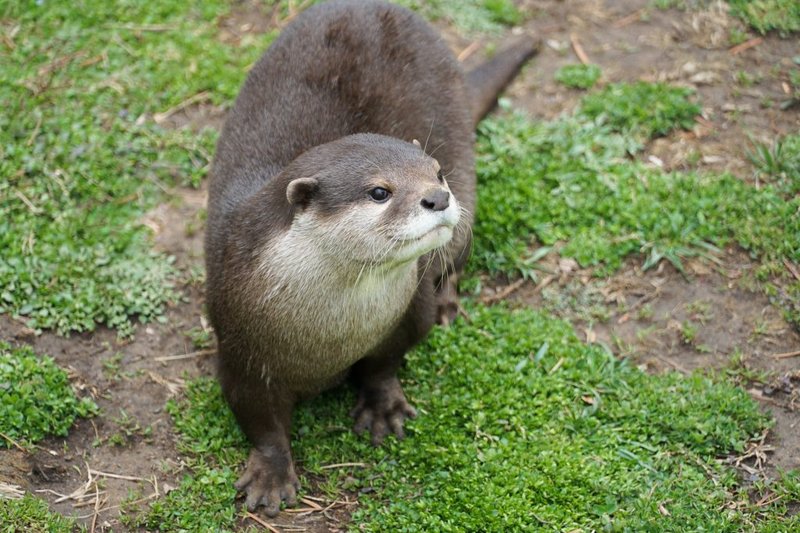
Think of the giant otter as the class clown of the river. They’re known for their joyful antics, often seen swimming in groups, playing, and even using tools to crack open shellfish. However, despite their cuteness, it’s important to remember that they are wild animals and can be unpredictable. If you find yourself face-to-face with one, you’ll want to know the best way to interact—or not interact—with them. Here’s everything you need to know to stay safe and make the most of your encounter.
Understanding Giant Otters
Giant otters are native to the rivers and lakes of South America, particularly the Amazon Basin. They can grow up to 6 feet long (1.8 meters) and weigh as much as 75 pounds (34 kg). Their sleek, dark fur helps them blend into their aquatic environment, making them excellent hunters. Unlike their smaller cousins, giant otters are social creatures and usually live in family groups.
You might wonder what makes giant otters unique besides their size. Here’s the thing: they have a *remarkable* social structure. Family groups can include up to 20 individuals, and they communicate through a series of vocalizations, ranging from whistles to grunts. You might catch them playing and socializing, which is truly a sight to behold. Just remember, while they’re playful, they’re also protective of their territory.
First Steps If You Spot One
If you find yourself face-to-face with a giant otter, the first thing to do is to stay calm. Your instinct might be to rush away or make loud noises, but that could startle the otter. Instead, take a moment to observe. They’re naturally curious creatures and may come closer to check you out.
Ensure you keep your distance. If the otter seems unbothered by your presence, try to maintain a safe space between you. A good rule of thumb is to stay at least 50 feet (15 meters) away. This distance might not only keep you safe but also allow for a more authentic wildlife experience. It’s like watching a live performance; you want to enjoy the show without stepping on stage.
What Not to Do
While growing curious about giant otters is natural, there are several actions you’ll want to avoid. Here’s a list of don’ts when you encounter one:
- Don’t approach: Getting too close can be perceived as a threat, which may provoke aggression.
- Don’t feed them: Human food can disrupt their natural hunting habits—let them be wild.
- Don’t corner them: If you’re on a small boat or near the shore, ensure there are escape routes for the otter.
These creatures, while playful, have sharp teeth and are fierce protectors of their family. Just like you wouldn’t walk up to a lion to say hello, it’s best to admire them from a safe distance.
Capturing the Moment Safely
If a giant otter is close enough for a photo, you might want to capture the moment. But before you reach for your camera, keep a few things in mind. Be respectful of their space. If the otter seems intrigued by your presence but isn’t showing signs of aggression, it could be the perfect opportunity for a stunning shot.
When photographing, use a zoom lens if possible. This way, you won’t have to get too close, which benefits both you and the otter. Remember to turn off any flash as it might startle them. Capturing their natural behavior can be rewarding, and it’s always better to have them looking their best without any disturbances.
Educating Yourself Post-Encounter
After your encounter, take some time to learn more about giant otters. Understanding their behavior, diet, and social structures can provide great insight into their lives. Plus, it can help you share what you’ve learned with friends or family, spreading awareness about these magnificent animals.
Consider visiting local wildlife centers or reading books on wildlife conservation. You may find that supporting conservation efforts is a way to play a role in protecting their habitats. Remember, every step counts when it comes to preserving wildlife for future generations.
When to Seek Help
In some cases, you might witness unusual behavior from a giant otter, like if it appears sick or is stranded. If you see something concerning, it may be wise to contact local wildlife authorities. They are trained to handle wildlife situations and can ensure the otter gets the help it may need.
Explain your observation clearly when you reach out for help. Provide specific details such as location, behavior, and any visible injuries. This information can aid in a swift and effective response.
Encounters with giant otters can be thrilling and memorable. These playful creatures offer a glimpse into the wonders of nature, reminding us of the beauty and complexity of wildlife. By staying calm and informed, you can safely enjoy your experience while respecting these magnificent animals.
So, next time you’re out exploring, keep your eyes peeled. You never know when a giant otter might just swim into your life, ready to put on an unforgettable show. Enjoy the adventure, and remember—observe, respect, and embrace the wild!

